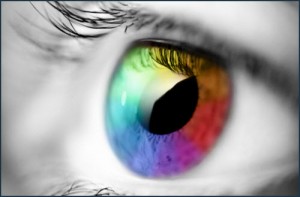By Doug Stephens
As you read this post, you are digesting a form of content that represents a quickly diminishing proportion of the total web content you consume each day. The written web is steadily becoming a thing of the past.
By 2013 Cisco estimates that 90% of all consumer IP traffic will be video. If you think this sounds implausible, consider that even today video represents well over 50% of all consumer traffic. Social bookmarking site Pinterest recently hit 10 million unique monthly users faster than any other site in history. Infographics, a marriage of visual design and  data, have become a common means of helping us digest and contextualize complex data sets. Even traditional newspapers are increasingly turning to the infographic as a means of getting the story across to readers, giving welcomed relief from the graphs, charts and tables traditionally used by media to convey data. Even resumes are moving from text to graphics, with sites like visualizeme.com and others turning the traditional, dull resume into a thing of the past.
data, have become a common means of helping us digest and contextualize complex data sets. Even traditional newspapers are increasingly turning to the infographic as a means of getting the story across to readers, giving welcomed relief from the graphs, charts and tables traditionally used by media to convey data. Even resumes are moving from text to graphics, with sites like visualizeme.com and others turning the traditional, dull resume into a thing of the past.
This move to a visual web makes sense when you consider the avalanche of information that the typical consumer is coping with today. A 2009 University of California San Diego study estimated that the average consumer was already being exposed to about 34 gigabytes of information or 100,000 words per day. With dramatic increases to both processing power and the ubiquity of mobile technology in the 3 years since the study, one can only assume these figures would be even more mind-boggling now. Thus, it follows that our minds are seeking visual breaks – a respite from the enormous glut of data coming at us. Images and video give us that.
What it means for brands, manufacturers and retailers who haven’t already realized it, is that the days of telling customers about your product with words are coming to an end. Traditional catalogs, brochures and selling aids won’t cut it in a world where consumers are seeking visual and audible alternatives. Your word-based pitches will be shunned.
The fundamental reality is that as our capacity to process information steadily increases, our predilection for words will steadily diminish. Our brains are subconsciously seeking messages that provide our eyes these visual resting points. In other words, the brand with the best pictures, graphics or video will likely win – regardless of what they sell.
This means reimagining your business, your brand and your product through all visual tools at your disposal. It means exploring your brand through the lenses of Youtube, Flickr, Pinterest, Tumblr and other visually based social tools. It means revisiting websites with an eye to crystalizing thoughts and ideas into images and sounds, instead of words. It means showing consumers instead of telling them.
Welcome to the visual web.

